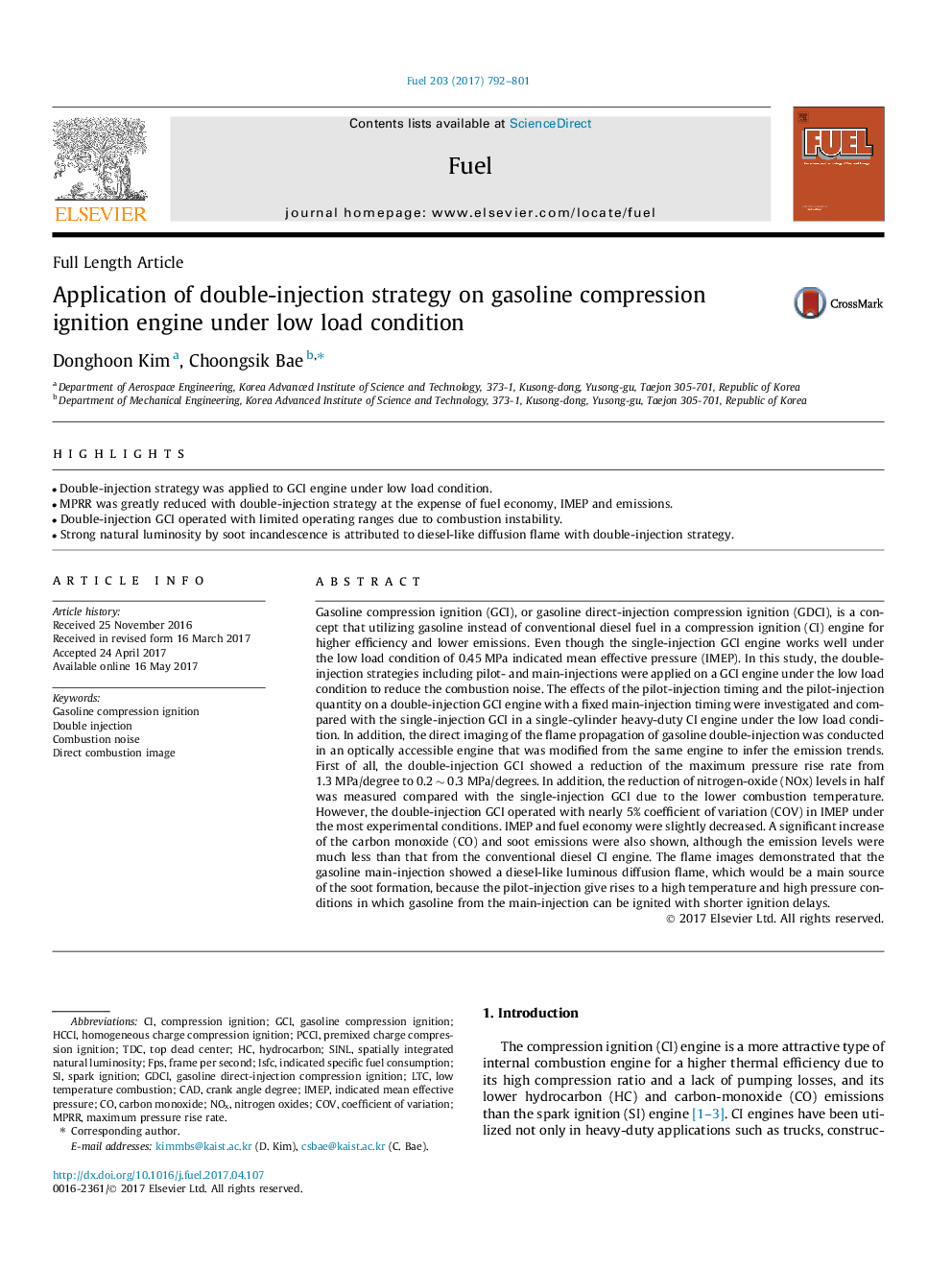| کد مقاله | کد نشریه | سال انتشار | مقاله انگلیسی | نسخه تمام متن |
|---|---|---|---|---|
| 6474458 | 1424961 | 2017 | 10 صفحه PDF | دانلود رایگان |
- Double-injection strategy was applied to GCI engine under low load condition.
- MPRR was greatly reduced with double-injection strategy at the expense of fuel economy, IMEP and emissions.
- Double-injection GCI operated with limited operating ranges due to combustion instability.
- Strong natural luminosity by soot incandescence is attributed to diesel-like diffusion flame with double-injection strategy.
Gasoline compression ignition (GCI), or gasoline direct-injection compression ignition (GDCI), is a concept that utilizing gasoline instead of conventional diesel fuel in a compression ignition (CI) engine for higher efficiency and lower emissions. Even though the single-injection GCI engine works well under the low load condition of 0.45 MPa indicated mean effective pressure (IMEP). In this study, the double-injection strategies including pilot- and main-injections were applied on a GCI engine under the low load condition to reduce the combustion noise. The effects of the pilot-injection timing and the pilot-injection quantity on a double-injection GCI engine with a fixed main-injection timing were investigated and compared with the single-injection GCI in a single-cylinder heavy-duty CI engine under the low load condition. In addition, the direct imaging of the flame propagation of gasoline double-injection was conducted in an optically accessible engine that was modified from the same engine to infer the emission trends. First of all, the double-injection GCI showed a reduction of the maximum pressure rise rate from 1.3 MPa/degree to 0.2 â¼Â 0.3 MPa/degrees. In addition, the reduction of nitrogen-oxide (NOx) levels in half was measured compared with the single-injection GCI due to the lower combustion temperature. However, the double-injection GCI operated with nearly 5% coefficient of variation (COV) in IMEP under the most experimental conditions. IMEP and fuel economy were slightly decreased. A significant increase of the carbon monoxide (CO) and soot emissions were also shown, although the emission levels were much less than that from the conventional diesel CI engine. The flame images demonstrated that the gasoline main-injection showed a diesel-like luminous diffusion flame, which would be a main source of the soot formation, because the pilot-injection give rises to a high temperature and high pressure conditions in which gasoline from the main-injection can be ignited with shorter ignition delays.
Journal: Fuel - Volume 203, 1 September 2017, Pages 792-801
